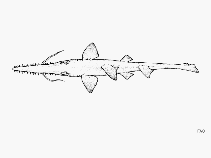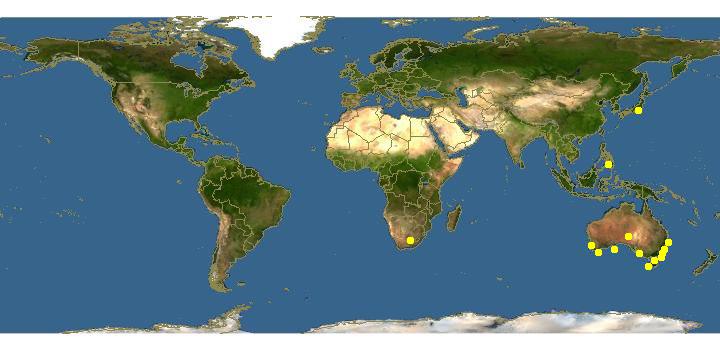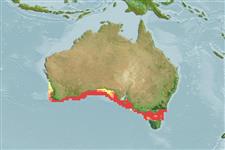http://www.fishbase.org/Summary/speciesSummary.php?genusname=Pristiophorus&speciesname=cirratus ---> http://192.134.151.83/Summary/speciesSummary.php?genusname=Pristiophorus&speciesname=cirratus
http://192.134.151.83/Summary/speciesSummary.php?genusname=Pristiophorus&speciesname=cirratus ---> https://fishbase.mnhn.fr/Summary/speciesSummary.php?genusname=Pristiophorus&speciesname=cirratus
https://fishbase.mnhn.fr/Summary/speciesSummary.php?genusname=Pristiophorus&speciesname=cirratus ---> https://fishbase.mnhn.fr/summary/Pristiophorus-cirratus.html
Pristiophorus cirratus, Common sawshark : fisheries

You can
sponsor
this page
Common name (e.g. trout)
Genus + Species (e.g. Gadus morhua)
-

-
About this page
-
Languages
-
User feedbacks
-
Citation
-
Uploads
-
Related species
-


 Common sawshark
Add your observation in
Fish Watcher
Upload your
photos
and
videos
Common sawshark
Add your observation in
Fish Watcher
Upload your
photos
and
videos
Pictures
|
Stamps, Coins Misc.
|
Google image
 Pristiophorus cirratus
Pristiophorus cirratus
Picture by
FAO
Elasmobranchii (sharks and rays) >
Pristiophoriformes
(Saw sharks) >
Pristiophoridae
(Saw sharks)
Etymology:
Pristiophorus:
pristio-
, presumably derived from
prio
(Gr.), to saw, but treated here as a noun (a saw);
phorus
, from
phoreus
(Gr.), bearer or carrier, referring to saw-like snout (note also that
pristis
is Greek for sawfish). (
See ETYFish
)
;
cirratus:
Latin for curly or fringed, referring to long, string-like ventral barbels. (
See ETYFish
)
.
Environment: milieu / climate zone / depth range / distribution range
Ecology
Marine; demersal; depth range 37 - 310 m (Ref.
6871
), usually 37 - 146 m (Ref.
54709
). Subtropical; 28°S - 45°S, 113°E - 154°E (Ref.
54709
)
Eastern Indian Ocean: southern Australia (Ref.
6871
). Does not occur in the Western Central Pacific (Ref.
31368
).
Length at first maturity / Size / Weight / Age
Maturity: L
m
?
, range 97 - ? cm
Max length : 137 cm TL male/unsexed; (Ref.
247
); common length : 125 cm TL male/unsexed; (Ref.
9987
); max. reported age: 15 years (Ref.
6871
)
Pristiophorus cirratus
has a long, narrow, and narrowly tapering rostrum (rostrum length is 27-29% of TL), distance from rostral tip to barbels about equal or slightly greater than distance from barbels to mouth (1:1.2-1.3); distance from rostral barbels to nostrils slightly less or equal to distance from nostrils to 1st to 4th gill slits. About 9-10 large rostral teeth on each side of the rostrum in front of the barbels, 9 behind them; distance from mouth to nostrils 1.3-1.4 times internarial space. Tooth rows 39-49 in upper jaw. Dorsal and pectoral fins covered with denticles in large specimens. Lateral trunk denticles largely unicuspidate. First dorsal fin origin behind free rear tips of pectorals by eye length or more (Ref.
247
).
P. cirratus
has a body pattern of dark blotches (mostly darker bands between pectoral fin bases, over gill slits, between spiracles and below dorsal fins) and spots (occasionally faint). Nostrils, almost circular, are situated about 2/3 way from barbels to corner or mouth, width at nostrils more than 4.5 in preoral snout in adults; preoral snout length more than 2.3 times distance from barbels to snout tip (Ref.
6871
). Rostral teeth with dark margins; underside abruptly uniformly white (Ref.
41394
). First dorsal fin origin behind free rear tips of pectorals by eye length or more (Ref.
247
). Caudal fin almost straight, with slender upper and lower lobes; pectoral well developed but are not ray-like (Ref.
6871
).
Found on the continental shelf and upper slope. Forms schools. Feeds on small fishes, including cornet fishes (
Fistularia
), and crustaceans. Ovoviviparous, with 3-22 young in a litter (48360). Size at birth about 31-34 cm. May live for more than 15 years. Meat marketed fresh and frozen.
Ovoviviparous, embryos feed solely on yolk (Ref.
50449
). Males mature at about 97 cm, born at about 38 cm (Ref.
6871
). Common sawshark lives for more than 15 years. Mature females appear to breed every 1-2 years, carrying from 3-22 young, with about 10 being the average. After 12 months' gestation, the pups are born in shallow coastal areas. They are about 11-14.5 in (27-37 cm) long at birth (Ref.
48640
).
Compagno, L.J.V.
, 1984. FAO Species Catalogue. Vol. 4. Sharks of the world. An annotated and illustrated catalogue of shark species known to date. Part 1 - Hexanchiformes to Lamniformes. FAO Fish. Synop. 125(4/1):1-249. Rome, FAO. (Ref.
247
)
IUCN Red List Status (Ref.
130435
)
Least Concern (LC)
; Date assessed:
14 April 2015
CITES
Not Evaluated
Not Evaluated
Threat to humans
Harmless
Human uses
Fisheries: commercial
FAO - Fisheries:
species profile
; Publication:
search
|
FishSource
|
More information
Countries
FAO areas
Ecosystems
Occurrences
Introductions
Stocks
Ecology
Diet
Food items
Food consumption
Ration
Common names
Synonyms
Metabolism
Predators
Ecotoxicology
Reproduction
Maturity
Spawning
Spawning aggregation
Fecundity
Eggs
Egg development
Age/Size
Growth
Length-weight
Length-length
Length-frequencies
Morphometrics
Morphology
Larvae
Larval dynamics
Recruitment
Abundance
BRUVS
References
Aquaculture
Aquaculture profile
Strains
Genetics
Electrophoreses
Heritability
Diseases
Processing
Nutrients
Mass conversion
Collaborators
Pictures
Stamps, Coins Misc.
Sounds
Ciguatera
Speed
Swim. type
Gill area
Otoliths
Brains
Vision
Tools
E-book
|
Field guide
|
Length-frequency wizard
|
Life-history tool
|
Point map
|
Classification Tree
|
Catch-MSY
|
Special reports
Check for Aquarium maintenance
|
Check for Species Fact Sheets
|
Check for Aquaculture Fact Sheets
Download XML
Summary page
|
Point data
|
Common names
|
Photos
Internet sources
AFORO (otoliths) |
Aquatic Commons
|
BHL
|
Cloffa
|
BOLDSystems
|
Websites from users
|
Check FishWatcher
|
CISTI
|
Catalog of Fishes
:
genus
,
species
|
DiscoverLife
|
ECOTOX
| FAO - Fisheries:
species profile
; Publication:
search
|
Faunafri
| Fishipedia |
Fishtrace
| GenBank:
genome
,
nucleotide
|
GloBI
|
Google Books
|
Google Scholar
|
Google
| IGFA World Record |
MitoFish
|
Otolith Atlas of Taiwan Fishes
|
PubMed
| Reef Life Survey | Socotra Atlas |
Tree of Life
| Wikipedia:
Go
,
Search
| World Records Freshwater Fishing |
Zoological Record
Estimates based on models
Preferred temperature (Ref.
123201
): 14 - 17.7, mean 15.4 °C (based on 112 cells).
Phylogenetic diversity index (Ref.
82804
): PD
50
= 0.5156 [Uniqueness, from 0.5 = low to 2.0 = high].
Bayesian length-weight: a=0.00389 (0.00180 - 0.00842), b=3.12 (2.94 - 3.30), in cm total length, based on all LWR estimates for this body shape (Ref.
93245
).
Trophic level (Ref.
69278
): 4.2 ±0.71 se; based on food items.
Resilience (Ref.
120179
): Low, minimum population doubling time 4.5 - 14 years (tmax=15; Fec=3).
Fishing Vulnerability (Ref.
59153
): Very high vulnerability (82 of 100).
Price category (Ref.
80766
):
High
.
Back to Search
Random Species
Back to Top
Accessed through:
Not available
FishBase mirror site :
localhost
Page last modified by :
mrius-barile
- 20 July 2016
Fatal error
: Uncaught ArgumentCountError: Too few arguments to function checkEcotox(), 1 passed in /var/www/html/summary/speciessummary.php on line 2304 and exactly 3 expected in /var/www/html/includes/speciessummary.lib.php:2579 Stack trace: #0 /var/www/html/summary/speciessummary.php(2304): checkEcotox() #1 {main} thrown in
/var/www/html/includes/speciessummary.lib.php
on line
2579
|






